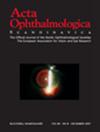Integration of ipsc-derived human photoreceptors into rodent models of retinal degeneration
Abstract
A main cause for vision impairment and blindness is the loss of light-sensing photoreceptors in the retina. However, photoreceptors do not regenerate in mammals including humans, thus cell transplantation has emerged as a potential treatment approach for blinding diseases. Therefore, a pipeline for assessing the transplantation of human stem cell-derived photoreceptors into mouse models of retinal generation was developed. Human photoreceptor-specific reporter iPSC-derived retinal organoids were used for isolation of donor cells via flow-cytometry. After transplantation we observed extensive incorporation of human photoreceptors in mice with cone dysfunction/loss. This incorporative phenotype was validated in both cone-only as well as pan-photoreceptor transplantations. Rather than forming a glial barrier, Müller cells extend throughout the graft, and additionally form a series of adherens junctions between mouse and human cells, reminiscent of an outer limiting membrane. Donor-host interaction appears to promote transplant polarization as well as development of morphological features critical for light detection, namely formation of inner- and outer-segments mainly oriented towards the host retinal pigment epithelium. Putative synapse formation and graft function was observed both at the structural level and by electrophysiological analysis using micro-electrode recordings. Transcriptomic analysis reveals increased expression of cone photoreceptor maturation genes with time after transplantation, in comparison to cones of age-matched retinal organoids in vitro. While highly integrative donor cell clusters were observed in partially degenerated recipients, transplantation into hosts with late-stage degeneration, i.e. with complete photoreceptor loss, lead to more wide-spread distribution of donor cells within the sub-retinal space and reduced signs for integration and maturation. Thus, interaction with the host retina appears to be important for graft integration, maturation, polarization and function. Overall, these results show that human photoreceptors interact readily with a partially degenerated mouse retina.
Funding:
BMBF – ReSight (01EK1613A)
DFG – AD375/7-1 (SPP2127), SEQ2146
FFB – TA-RM-0522-0824-TUD-TRAP

 求助内容:
求助内容: 应助结果提醒方式:
应助结果提醒方式:


